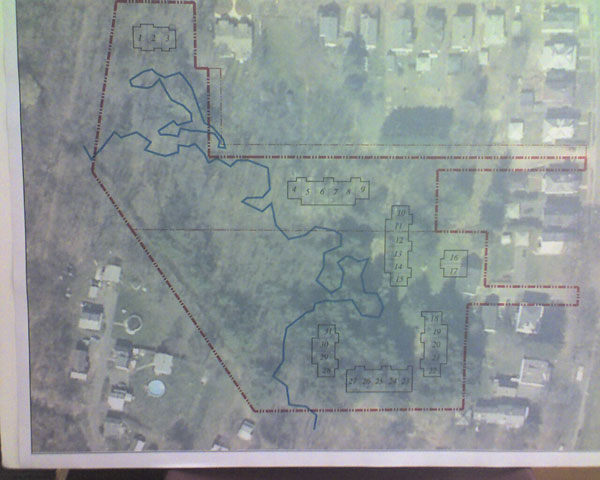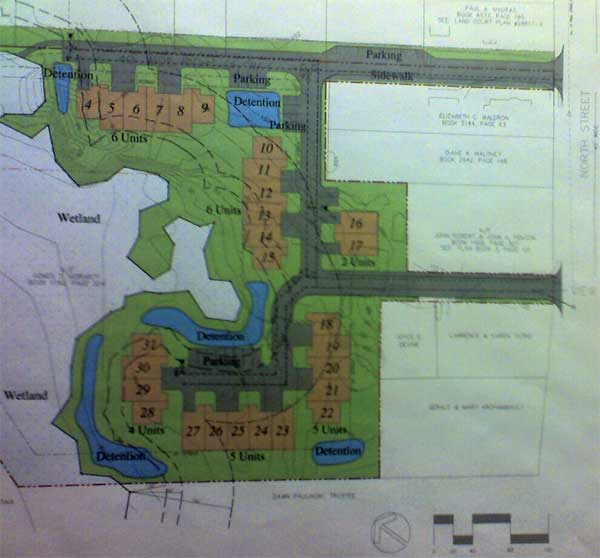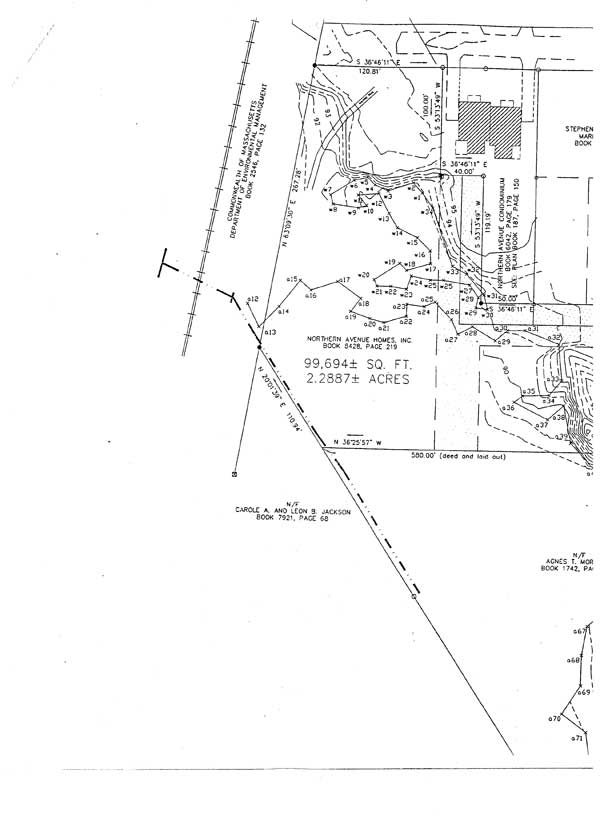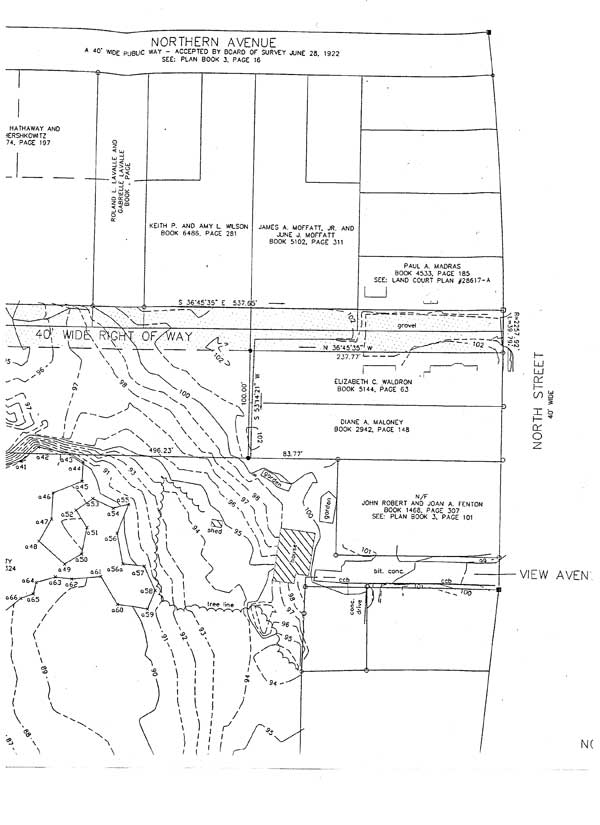We are pleased to share this report from Alec MacLeod of Orange, an environmental scientist with expertise in wetlands. NSNA engaged Mr. MacLeod to inspect the wetlands bordering Kohl Construction’s proposed condo project off North Street. With the permission of Mr. Kohl, Mr. MacLeod paid a site visit to the property on August 20. He was accompanied by Chuck Dauchy, a wetlands consultant retained by Kohl. Mr. MacLeod reports:
Northampton’s Conservation Commission will review Kohl’s wetlands delineation on August 23 in the City Hall Hearing Room, 210 Main Street, 2nd floor (enter via the back door):
We believe the Commission should delay any final review of Kohl’s proposal until spring 2008, so the nature and extent of potential vernal pools can be plotted accurately. A delay of this kind would be in line with procedures adopted by the city of Attleboro. We also believe a second look at the wetlands boundary at that time might be in order, since the boundary appears to be unusually diffuse on this site.
See also:
Kohl’s Original Wetlands Delineation




Kohl Construction’s Northampton Wetlands Application (PDF)
Kohl Construction’s Request for Determination of Applicability (PDF, relating to wetlands)
August 21, 2007
…I am writing to report on my site visit with Chuck Dauchy to review the wetland delineation on the parcels located off of Northern Avenue. We met on-site yesterday and spent several hours going over the delineation. The locations of the wetland boundary along the “A” line between A-8 and A-12 as well as A-15 through A-18 have been moved farther up the slope, as has the boundary between wetland flags W-1- through W-15.
This site is particularly difficult to delineate, as the differences between areas meeting the technical definitions of hydrophylic plant communities and hydric soils are very slight over much of the site. Mr. Dauchy and I examined literally hundreds of soil samples along all the wetland boundaries and discussed the degree to which the soils along the boundary either did or did not display the colors and other features necessary to define the soil at that location as hydric. Although there were indicators of hydric soil almost anywhere we looked, not all of them were present in all samples.
As we walked through the site, we also viewed the plant community. This was also mixed, but the objective was to delineate the line along which a prevalence of hydrophylic vegetation exists along the wetland side of the boundary and upland plants dominate the community above the delineated line. It is necessary to have both a wetland plant community and hydric soil to identify an area as wetland.
I examined a couple of the depressions to see if I could find the shells of fingernail clams (indicators of vernal pool habitat), but found none. However, Bruce Young [Northampton Land Use and Conservation Planner] tells me that these shells have been found on site, so vernal pool habitat is in fact present, though the full extent of this habitat has not been determined. The Conservation Commission may wish to request that the site be reviewed in the spring to fully assess the degree and location of the vernal pool habitat present within the parcel.
I cannot address the stormwater management aspect of the proposed project, since I have not seen the calculations. However, a review conducted by a Professional Engineer will carry much more weight than my opinion would anyway. I recommend that, if you wish to have a complete review of the consequences of stormwater management for this project, a PE should be retained to provide an independent examination.
Having not seen the Notice of Intent for this project, I also cannot address that completeness of the Notice of Intent nor the degree to which the NOI proposes a project compliant with the Massachusetts Wetlands Protection Act and Northampton Wetlands Protection Ordinance.
The pictures on your web site show a buffer zone project – as such, DEP will have little objection to it. But given the presence of vernal pool habitat, the buffer zone becomes quite important, since such vernal pool obligate species as Wood Frogs and Spotted Salamanders live in uplands during most of the year. It has been the case that the Northampton Conservation Commission has identified a no-build setback policy. The Commission should assure that as much buffer zone is protected as is reasonably possible, including placement of stormwater detention basins. I hope this review is useful to you. Please feel free to respond to this email if I can be of further assistance in this matter.
Sincerely,
Alec MacLeod
Northampton’s Conservation Commission will review Kohl’s wetlands delineation on August 23 in the City Hall Hearing Room, 210 Main Street, 2nd floor (enter via the back door):
5:30 PM-6:00PM
Request for Determination of Applicability filed by Northern Avenue Homes, Inc. and Tofino Associates, Inc. to determine whether the area depicted on the plans is an area subject to the Wetlands Protection Act and/or the Northampton Wetlands Ordinance and whether the boundaries of the resource areas depicted on the plans are accurately delineated. Project location is Northern Avenue, Map ID 25C-12 and 25C-17.
We believe the Commission should delay any final review of Kohl’s proposal until spring 2008, so the nature and extent of potential vernal pools can be plotted accurately. A delay of this kind would be in line with procedures adopted by the city of Attleboro. We also believe a second look at the wetlands boundary at that time might be in order, since the boundary appears to be unusually diffuse on this site.
See also:
Kohl’s Original Wetlands Delineation




Kohl Construction’s Northampton Wetlands Application (PDF)
Kohl Construction’s Request for Determination of Applicability (PDF, relating to wetlands)